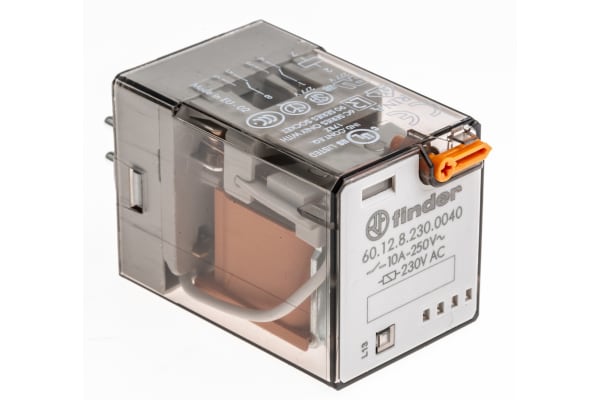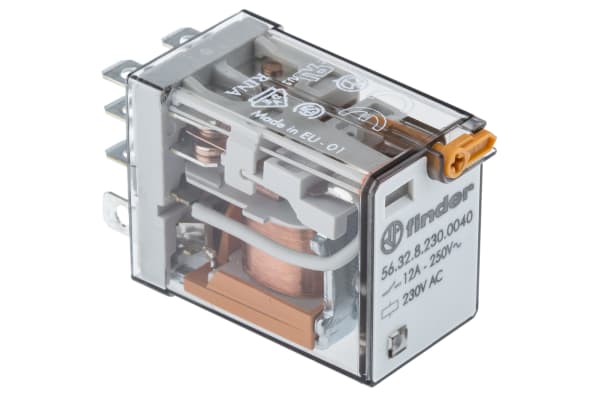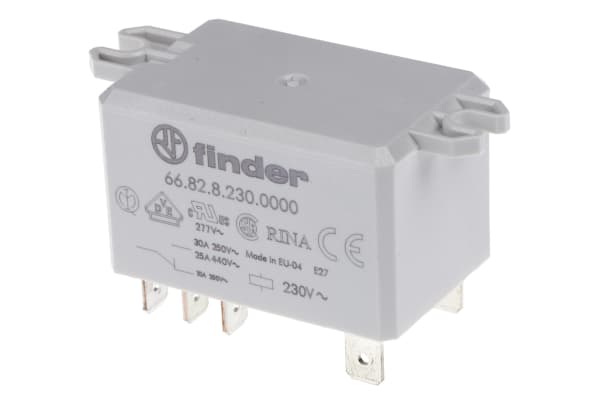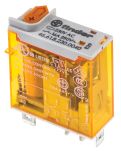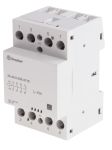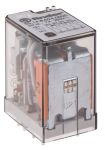Non-Latching Relays
Relays are electrical switches that are operated by electrical impulses with the primary function to open and close a circuit, they can also be referred to as industrial switches. There are 2 main types available, latching and non–latching relays.How do non-latching relays work?Non-latching relays are in a normally closed (NC) position and will stay in this state without power. When power passes through the circuit, the relay switched to a normally open (NO) position by using an internal coil to generate a magnetic force, holding this NO position. Once the current is turned off, it returns to the NC position. This makes non-latching relays well suited to push-button applications like keyboards and micro-controller input buttons.What are non-latching relays used for?Non-latching relays are highly durable and versatile components, making their performance long lasting and suitable for use in a wide range of applications, such as:Automotive enginesHousehold appliancesIndustrial machineryMedical equipmentTelecommunications equipmentWhat is the difference between latching and non-latching relays?Both types of relays in similar in design and function, however, a significant difference between them is that a latching relay will remain in the last position it when it was last powered, whereas a non-latching goes back to its normal position. This makes each more type of relay suitable for different applications. Considerations when selecting a relayWhen choosing a relay, it is important to consider a number of specifications to ensure it is fit for purpose, some factors include:Coil voltage – the required voltage to actuate the switching mechanism. If a voltage is too high this could damage the components, if it is too low then it will not actuate. Contact configuration – This is the state the contacts are in without power. For example SPST, single pole single throw.Contact material – the relay contacts are available in many materials that have certain properties. Common materials are gold, silver, tin oxide and nickel Coil power – the amount of power (watts) the coil operates at. This must match the power in the circuit for correct function. Coil resistance – the amount of resistance (ohms) in the circuit that the coil creates.
-
Finder, 230V ac Coil Non-Latching Relay DPDT, 10A Switching Current Plug In, 2 Pole, 60.12.8.230.0040
IDR295,789.80 -
Finder, 230V ac Coil Non-Latching Relay DPDT, 12A Switching Current Plug In, 2 Pole, 56.32.8.230.0040
IDR316,662.91 -
Finder, 230V ac Coil Non-Latching Relay DPDT, 16A Switching Current Plug In, 2 Pole, 62.32.8.230.0040
IDR326,522.57 -
Finder, 230V ac Coil Non-Latching Relay DPDT, 16A Switching Current Plug In, 2 Pole, 62.82.8.230.0000
IDR282,783.44 -
Finder, 230V ac Coil Non-Latching Relay DPDT, 30A Switching Current Flange Mount, 2 Pole, 66.82.8.230.0000
IDR307,747.26 -
Finder, 230V ac Coil Non-Latching Relay DPDT, 8A Switching Current Plug In, 2 Pole, 46.52.8.230.0040
IDR233,694.92 -
Finder, 230V ac Coil Non-Latching Relay DPDT, 8A Switching Current Plug In, 2 Pole, 46.52.8.230.0054
IDR263,483.68 -
Finder, 230V ac Coil Non-Latching Relay DPNO, 20A Switching Current DIN Rail, 2 Pole, 22.22.8.230.4000
IDR449,243.87 -
Finder, 230V ac Coil Non-Latching Relay SPDT, 16A Switching Current PCB Mount Single Pole, 40.61.8.230.0000
IDR222,576.58 -
Finder, 230V ac Coil Non-Latching Relay SPDT, 16A Switching Current Plug In Single Pole, 46.61.8.230.0040
IDR212,821.81 -
Finder, 230V ac Coil Non-Latching Relay SPDT, 20A Switching Current Flange Mount Single Pole, 65.31.8.230.0000
IDR298,097.38 -
Finder, 24 V ac, 24V dc Coil Non-Latching Relay 4NO, 63A Switching Current DIN Rail, 4 Pole, 22.64.0.024.4310
IDR1,281,860.69 -
Finder, 24 V ac, 24V dc Coil Non-Latching Relay DPDT, 63A Switching Current DIN Rail, 4 Pole, 22.64.0.024.4610
IDR2,301,601.27 -
Finder, 24 V dc, 24V ac Coil Non-Latching Relay 4NO, 40A Switching Current DIN Rail, 4 Pole, 22.44.0.024.4310
IDR1,162,810.54 -
Finder, 24 V dc, 24V ac Coil Non-Latching Relay DPDT, 40A Switching Current DIN Rail, 4 Pole, 22.44.0.024.4610
IDR1,110,785.10 -
Finder, 240V ac Coil Non-Latching Relay 3PDT, 40A Switching Current DIN Rail, 4 Pole, 22.44.0.230.4710
IDR1,562,231.66 -
Finder, 240V ac Coil Non-Latching Relay 4NO, 40A Switching Current DIN Rail, 4 Pole, 22.44.0.230.4310
IDR955,023.45 -
Finder, 240V ac Coil Non-Latching Relay DPNC, 25A Switching Current DIN Rail, 2 Pole, 22.32.0.230.4420
IDR521,093.52 -
Finder, 240V ac Coil Non-Latching Relay DPNO, 25A Switching Current DIN Rail, 2 Pole, 22.32.0.230.4320
IDR378,128.45 -
Finder, 24V ac Coil Non-Latching Relay 3PDT, 10A Switching Current Plug In, 3 Pole, 55.33.8.024.0010
IDR177,264.10 -
Finder, 24V ac Coil Non-Latching Relay 3PDT, 10A Switching Current Plug In, 3 Pole, 60.13.8.024.0040
IDR266,315.71 -
Finder, 24V ac Coil Non-Latching Relay 3PDT, 16A Switching Current Flange Mount, 3 Pole, 62.83.8.024.0000
IDR323,061.20 -
Finder, 24V ac Coil Non-Latching Relay 3PDT, 16A Switching Current Plug In, 3 Pole, 62.33.8.024.0040
IDR320,543.84 -
Finder, 24V ac Coil Non-Latching Relay 4PDT, 7A Switching Current PCB Mount, 4 Pole, 55.14.8.024.0000
IDR185,655.30



